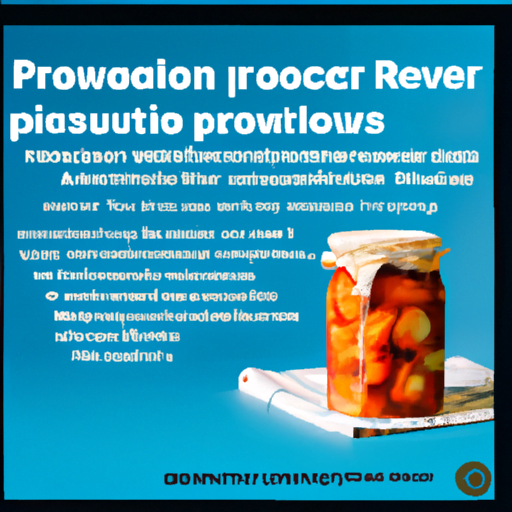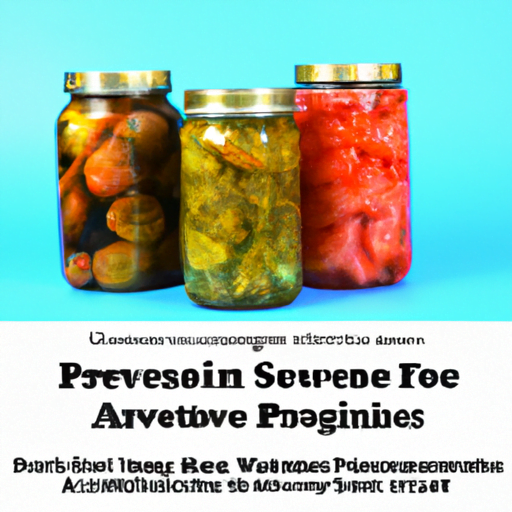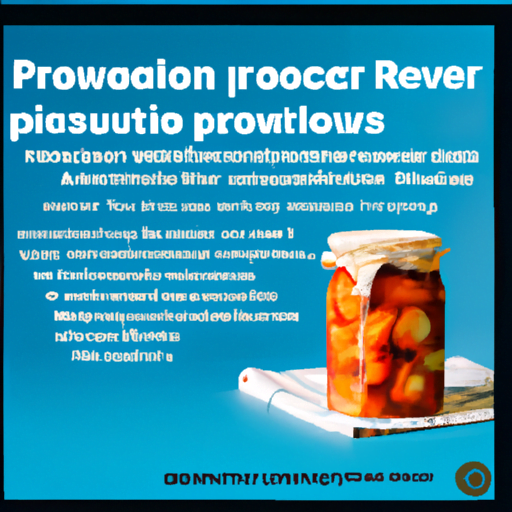So, you’re interested in off grid living and you want to know about the 10 effective methods of food preservation? Well, you’ve come to the right place! Food preservation is a crucial skill to have, especially if you’re living off the grid or simply want to be more self-sufficient. In this article, we’ll dive into the various methods that can help you prolong the shelf life of your food and ensure that you always have something to eat, no matter the circumstances.
In the world of food preservation, there are numerous methods to choose from, each with its unique benefits and techniques. From canning and drying to fermenting and freezing, these methods can help you preserve a wide variety of fruits, vegetables, meats, and even dairy products. We’ll take a closer look at each method, discussing how they work and providing you with practical tips and tricks along the way.
Whether you’re looking to stockpile food for emergencies, trying to make the most of your garden produce, or simply want to reduce your food waste, the 10 methods of food preservation we’ll be covering in this article will prove to be extremely useful. From traditional methods that have been used for centuries to modern techniques that harness the power of technology, we’ve got you covered. So, sit back, relax, and get ready to learn more about the art of food preservation and how it can benefit your off grid lifestyle.

10 Effective Methods of Food Preservation
Preserving food is a crucial skill to have, especially in times when fresh produce may not be readily available. Whether you are living off-grid or simply want to become more self-sufficient, knowing how to preserve food will allow you to enjoy your favorite fruits, vegetables, and meats all year round. In this article, we will explore 10 effective methods of food preservation that you can easily incorporate into your daily life.
Canning
Canning is one of the most popular methods of preserving food. It involves sealing food in airtight containers, ensuring that no spoilage or contamination occurs. There are two main types of canning: water bath canning and pressure canning.
Water Bath Canning
Water bath canning is suitable for high-acid foods such as tomatoes, fruits, and pickles. To begin the process, you will need to prepare your food by washing, peeling, and cutting it into the desired size. Next, you will heat the food in jars with a water bath canner until it reaches the necessary temperature. Once the desired temperature is reached, the jars are sealed and stored in a cool, dry place.
Pressure Canning
Pressure canning is used for low-acid foods such as vegetables, meats, and poultry. The process involves using a pressure canner to reach temperatures higher than boiling water. These high temperatures are necessary to destroy any harmful bacteria, ensuring the safety of the preserved food. Pressure canning requires specific equipment and careful attention to ensure proper sealing of the jars.
Drying
Drying is an ancient method of food preservation that removes moisture from the food, preventing the growth of bacteria, mold, and yeast. There are various ways to dry food, including sun drying, air drying, and using a food dehydrator.
Sun Drying
Sun drying is a simple and effective method that can be used in areas with abundant sunlight. To sun dry food, you will need to wash and prepare the food as you would for any other preservation method. Then, you will place the food on a clean surface or drying rack and leave it in direct sunlight. It is essential to protect the food from insects and dust during the drying process.
Air Drying
Air drying is similar to sun drying but does not require direct sunlight. This method works best in areas with low humidity and good air circulation. To air dry food, you will need to hang or lay the food in a well-ventilated area. It is crucial to ensure that the food is protected from insects and dust, as well as from moisture.
Dehydrator Drying
Using a food dehydrator is a convenient way to dry food, especially if you live in an area with unpredictable weather conditions. A food dehydrator removes moisture from the food by circulating warm air around it. This method allows for precise control of temperature and drying time, ensuring that the food is dried properly without losing its flavor and nutritional value.
Freezing
Freezing is a widely used food preservation method that helps maintain the quality and freshness of food for an extended period. It involves rapidly lowering the temperature of the food to below freezing, which inhibits the growth of spoilage-causing microorganisms. There are a few key steps to freezing food effectively: flash freezing, packaging for freezing, and blanching.
Flash Freezing
Flash freezing involves quickly freezing individual pieces of food separately before packaging them for long-term storage. This technique ensures that the food freezes quickly, preserving its quality and preventing the formation of ice crystals that can damage the texture.
Packaging for Freezing
Proper packaging is essential for successful freezing. The packaging should be airtight and moisture-proof to prevent freezer burn and maintain the quality of the food. Plastic containers, freezer bags, and vacuum-sealed bags are commonly used for packaging frozen food.
Blanching for Freezing
Blanching is a process of briefly boiling or steaming vegetables before freezing them. Blanching is done to inactivate enzymes that can cause off-flavors and deterioration during storage. It also helps retain the color, texture, and nutritional value of the vegetables. After blanching, the vegetables are quickly cooled and then frozen in suitable containers.

Salting
Salting is a traditional method of food preservation that has been used for centuries. Salt draws moisture out of the food, creating an environment in which bacteria and other microorganisms cannot survive. Salting can be done in two ways: dry salting and wet salting.
Dry Salting
Dry salting involves rubbing or sprinkling salt directly onto the food. The salt penetrates the food, extracting moisture and altering the texture and flavor. This method is commonly used for preserving meats, such as bacon and cured ham.
Wet Salting
Wet salting, also known as brining, involves submerging the food in a saltwater solution. Brining helps preserve the food while adding flavor and moisture. It is often used for pickling vegetables and curing fish.
Smoking
Smoking is a preservation method that uses smoke created by burning wood or other combustible materials to flavor, cook, and preserve food. Smoking can be done in two ways: cold smoking and hot smoking.
Cold Smoking
Cold smoking is a slow, low-temperature process that imparts a smoky flavor to the food without fully cooking it. It is commonly used for preserving fish, cheese, and certain types of meat, such as bacon.
Hot Smoking
Hot smoking involves exposing the food to both smoke and heat, fully cooking it in the process. This method is used for preserving meats, such as sausages and ham, while adding a rich, smoky flavor.
Fermentation
Fermentation is a natural process that uses microorganisms, such as bacteria or yeast, to convert sugars into acids, alcohol, or gases. Fermentation not only preserves the food but also enhances its flavor, texture, and nutritional value. There are two main types of fermentation: lactic acid fermentation and yeast fermentation.
Lactic Acid Fermentation
Lactic acid fermentation is a process in which lactic acid bacteria convert sugars into lactic acid. This type of fermentation is commonly used for preserving vegetables in the form of sauerkraut, kimchi, and pickles.
Yeast Fermentation
Yeast fermentation involves the conversion of sugars into alcohol and carbon dioxide by yeast. This type of fermentation is used for preserving fruits, such as in the production of wine, cider, and vinegar.
Pickling
Pickling is a preservation method that involves immersing food in a solution of acid, such as vinegar or lemon juice, along with salt and spices. The acid and salt create an environment in which bacteria cannot thrive, preserving the food and giving it a tangy, flavorful taste. There are two main types of pickling: vinegar pickling and salt brine pickling.
Vinegar Pickling
Vinegar pickling is a process in which food is immersed in a solution of vinegar, salt, and spices. The acidity of the vinegar preserves the food, while the salt and spices add flavor. Vinegar pickling is commonly used for preserving cucumbers, onions, and other vegetables.
Salt Brine Pickling
Salt brine pickling involves immersing food in a solution of salt and water. The salt draws moisture out of the food, creating an environment in which bacteria cannot survive. Salt brine pickling is commonly used for preserving fruits and vegetables, such as olives, lemons, and cabbage.
Jellying
Jellying is a method of preserving food by turning it into a gelatinous substance. This process is achieved by cooking the food with sugar and pectin, a natural substance found in fruits. Jellying is commonly used for preserving fruits and meats.
Fruit Jellies
Fruit jellies are made by cooking fruit juice with sugar and pectin until it reaches a gel-like consistency. The resulting jelly can be stored in jars and enjoyed for an extended period. Fruit jellies are commonly spread on toast or used as a topping for desserts.
Meat Jellies
Meat jellies, also known as aspic, is made by cooking meat, bones, and other flavorful ingredients in water until gelatin is extracted. The resulting jelly is then used to surround and preserve meat or other ingredients, creating a savory and visually appealing dish.
Sugar Preservation
Sugar preservation is a method that involves using sugar to preserve fruits, vegetables, and even flowers. Sugar acts as a preservative by drawing moisture out of the food, making it inhospitable to bacteria and other microorganisms. There are two common methods of sugar preservation: jam making and candying.
Jam Making
Jam making involves cooking fruit with sugar until it reaches a thick, spreadable consistency. The high sugar content inhibits the growth of microorganisms, allowing the jam to be stored for an extended period. Jam making is a versatile method that can be used with various fruits, resulting in delicious spreads for toast, pastries, or desserts.
Candying
Candying is a process in which fruits, vegetables, or even flowers are preserved in a sugar syrup. The food is cooked in the syrup until the moisture is replaced by sugar, resulting in a sweet and slightly chewy texture. Candying is commonly used for fruits such as citrus peels and ginger, creating delightful treats.
Conclusion
Preserving food is a valuable skill that allows you to enjoy the flavors of your favorite fruits, vegetables, and meats throughout the year. By incorporating these 10 effective methods of food preservation into your routine, you can ensure that no food goes to waste and that your pantry is always stocked with delicious and nutritious options. So, whether you choose to can, dry, freeze, salt, smoke, ferment, pickle, jelly, or sugar preserve, remember that preserving food is not only practical but also a way to connect with the rich traditions of our ancestors.




